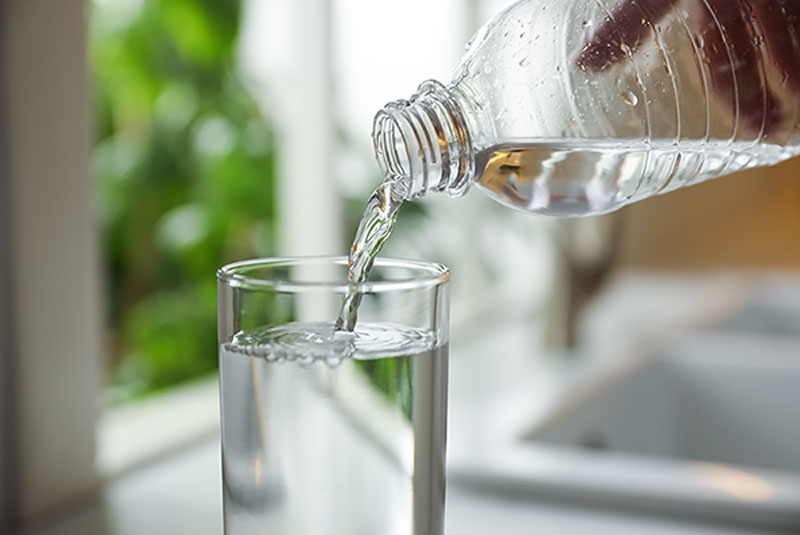The truth about bottled water
There are a number of myths related to bottled water that we as water experts find important to dispel for our customers. All facts on this page are supported by the FDA, EPA, and IBWA. Links to related bottled water regulations are provided for additional information.

Myth #1: Bottled water isn’t as strictly regulated as tap water and manufacturers have very few guidelines to follow.
Fact: Bottled water has been federally regulated since 1973.
The FDA has established set regulations that all bottled water companies must follow to ensure bottled water remains healthy and safe to drink.
The federal bottled water regulations set by the FDA are as stringent as those established by the EPA for tap water, if not more so. Any differences are usually the result of a regulated substance not being found in bottled water or a regulation already existing under another FDA provision that applies to bottled water.
For example, because lead can leach from pipes into municipal water as it travels into homes, the EPA has set the limit for lead in water at 15 ppb (parts per billion). Since lead pipes aren’t used in the production of bottled water, the FDA has set the limit for lead in bottled water at 5 ppb (parts per billion).
The FDA bottled water quality regulations require bottled water companies to regularly sample and analyze their water. Samples must be found to be safe and sanitary. The FDA also monitors bottled water plant and equipment design, bottling procedures, and record keeping. Bottled water companies must pass regular inspections by the FDA as part of its food safety program, and some states require bottled water companies to obtain an annual license.
Myth #2: The FDA has no authority over bottled water that doesn’t cross state lines (i.e. is not interstate commerce).
Fact: Most bottled water falls under the FDA’s jurisdiction, even if the bottled water itself is not transported between states.
Courts have long held that if any component used in the manufacturing of a product crosses state lines (e.g. the plastic used to make the bottles, the paper or ink used for printing labels, etc.), the FDA has jurisdiction over the entire final product, regardless of whether the product itself actually crosses state lines.
In the case of bottled water, either the packaging materials or the water itself almost always come from out of state, making it subject to FDA regulations. Congress has even enacted a law presuming that all food and beverage products are subject to interstate commerce regulations. As such, almost all bottled water falls under the jurisdiction of the FDA. Learn more about state bottled water facts and regulations.
Myth #3: Purified bottled water is nothing but tap water that is poured into a bottle and sold at a markup price.
Fact: Untreated tap water doesn’t meet the necessary requirements to be labeled as purified water.
The source water used for bottling may come from a municipality. However, this water is ultimately treated and filtered by the bottled water company to achieve high levels of purity prior to being packaged and sold. Water must be treated through reverse osmosis, distillation, deionization, or another suitable process to meet standards that allow it to be labeled as purified water.
Myth #4: Bottled water companies can put whatever they want on the label, so you never know where the water really came from.
Fact: Bottled water labels are required to clearly state the type (source) of water that is in the container.
Bottled water falls under the classification of a food product and must therefore meet extensive labeling requirements. This includes listing the type of water packaged in the bottle. Knowing the type of water will give you a good idea of the source the water came from. There are four main types of bottled water:
- Artesian Water – Water from deep in the ground that is tapped and collected through an aquifer.
- Mineral Water – Water that comes from an underground source and naturally contains trace minerals (total dissolved solids) of at least 250 parts per million.
- Purified Drinking Water – Water that is treated through distillation, reverse osmosis, or other means to purify the water and remove any contaminants or chemicals.
- Spring Water – Water that comes from an underground spring, typically collected at the point where the spring naturally flows to the surface.
Bottled water labels also include a way for consumers to contact the bottled water company to get additional answers to questions about the specific water source used, treatment methods, and water quality information.
Myth #5: Plastic water bottles only pollute the environment.
Fact: Plastic water bottles are 100% recyclable, and the recycling rate for single-serve plastic water bottles has more than doubled over the past seven years.
Pollution is always a concern, and the bottled water industry continually works toward reducing its impact on the environment. Since 2000, the average weight of a half-liter plastic water bottled has been reduced by 47.7%, and plastic water bottles are the most frequently recycled PET beverage container in curbside recycling programs. Source: IBWA.
Learn more about the importance of recycling plastics.

